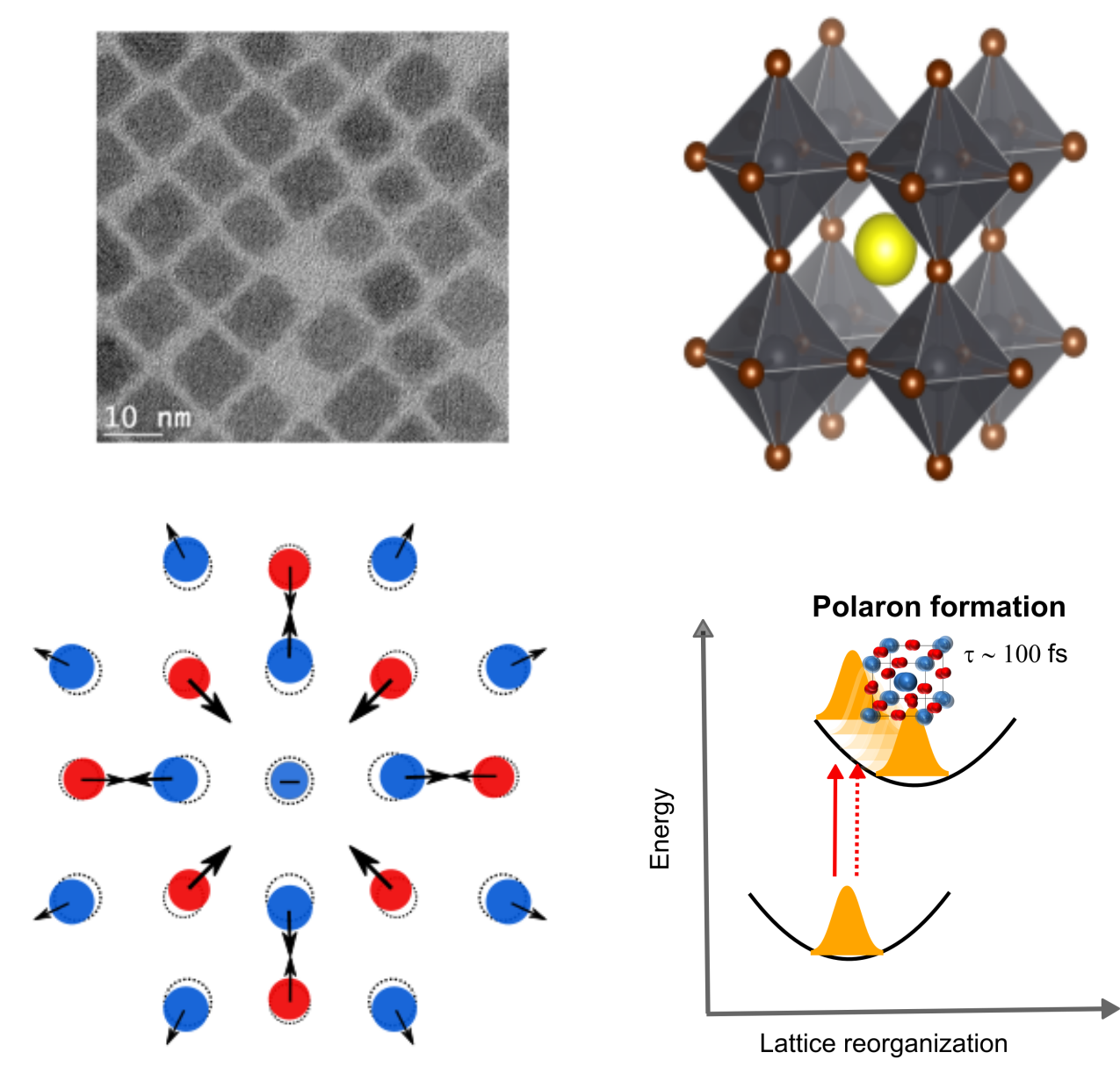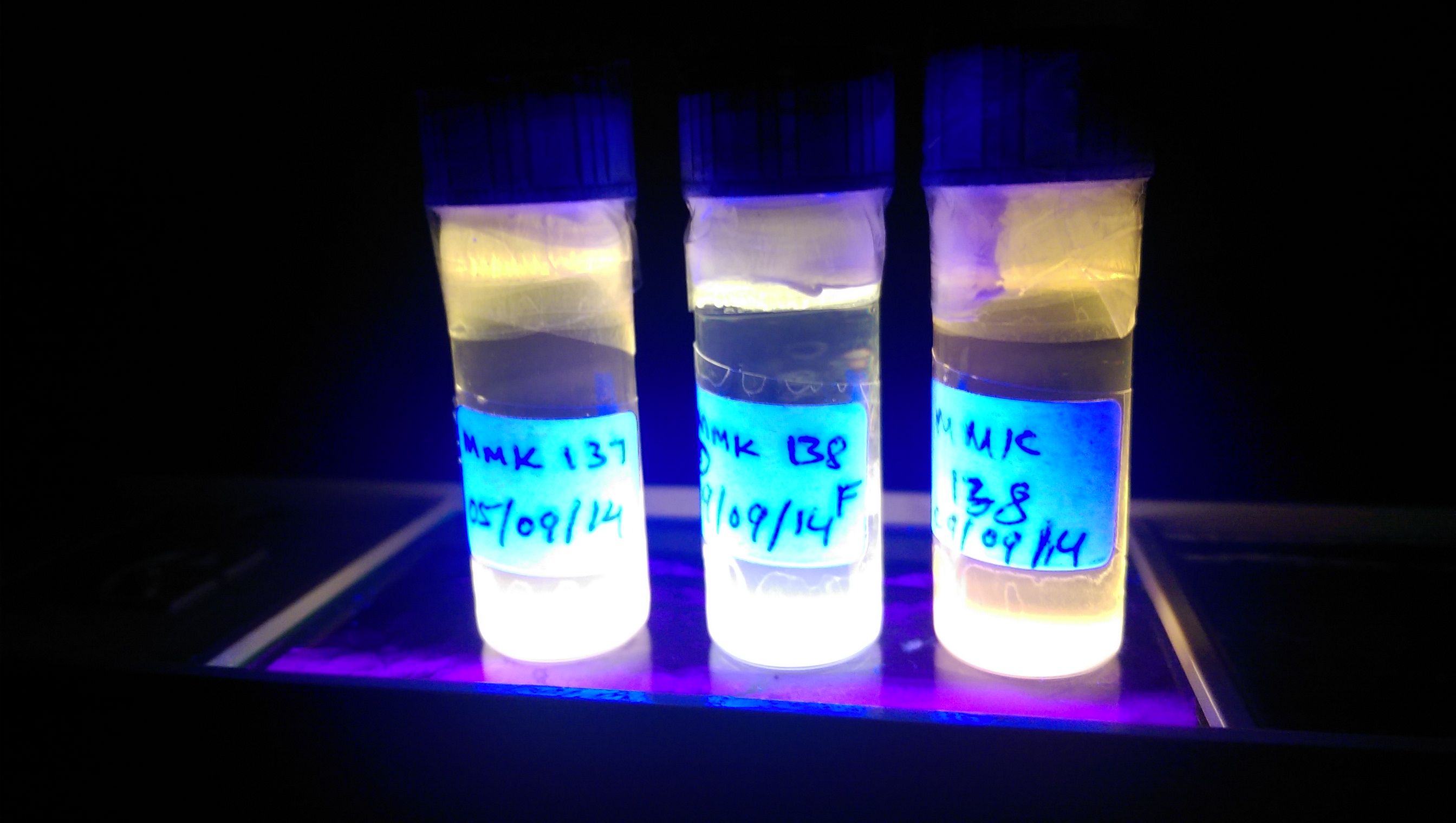Study of promising photovoltaic material leads to discovery of a new state of matter
Simplified One-Beam 2D Electronic Spectroscopy using a Millijoule Amplifier and HCF
McGill-made instrument reveals previously unseen quantum mechanical behaviour
Promising discovery could lead to a better, cheaper solar cell
Good Vibrations: new atom-scale products on horizon

Semiconductor perovskites have rapidly emerged onto the materials science scene since their tremendous initial performance in photovoltaic films in 2014. Since 2016, the nanocrystal version of these perovskites (P NC) have become available for easy solution phase synthesis and processing into device architectures. These P NC are also ideal for spectroscopic probing and connecting exciton dynamics to the device physics of this emergent class of materials. Unlike the conventional semiconductor quantum dot (QD), which is defined by quantum confined excitons (X), in P NC, the elementary excitation begins in time as a polaron but ends in time as an exciton.

Quantum dots are nanoscale semiconductors placing themselves between the microscopic molecular limits traditionally studied by chemists and the macroscopic bulk limit studied by physicists. In this intermediate regime of size and quantum mechanics, they are also referred to as an artificial atoms. This situation presents a rich playground for investigating the basic science which is at the heart of nanoscience, as well as rationally applying these fundamental results to develop possibly disruptive technologies. In this regard, we study phenomena such as optical gain, multi-exciton generation, surface effects, exciton-phonon coupling and hot exciton relaxation dynamics. Gaining an understanding of these phenomena will be key to assess their strengths and weaknesses in optoelectronic devices applications such as quantum dots solar cells, LEDs, sensors and QD-lasers.

In order to explore the basic science of nanocrystals, we develop and implement sophisticated laser spectroscopies to interrogate these materials in real time. With electronic and nuclear motion taking place on very fast timescales, we use an even faster “camera” – a femtosecond laser – to freeze out these motions and watch the ways in which these systems behave. In our lab, we use lasers that produce pulses of 10 femtoseconds (10 millionth of a billionth of a second) in duration. We can control these laser pulses so as to enable a wide variety of state-of-the-art spectroscopies to be performed on these nanocrystals, such as time-resolved photoluminescence spectroscopy, ultrafast transient absorption spectroscopy and multidimensional electronic spectroscopy.

In addition to conducting spectroscopic experiments on novel materials, we develop new instrumentation to extend the range of available experiments. Recently, we have developed a single beam broadband 2D electronic spectrometer with all-optical readout. Ultrafast coherent multi-dimensional spectroscopies are a powerful set of techniques used to unravel complex processes. These processes range from electronic coherences in molecular chromophores to many-body interactions in quantum-confined materials. This instrument shows that one needs neither complex beam geometries nor complex detection schemes in order to measure 2D spectra at optical frequencies. We also developed a setup for complete and independent polarization control of each pulse in the sequence. Together, these methodological improvements represent important enabling steps towards the longstanding goal of achieving an "Optical NMR", and extends the realm of all-optical multi-dimensional spectroscopies to spatially resolved experiments.

We are currently looking for highly motivated students. Contact us to learn about research opportunities.